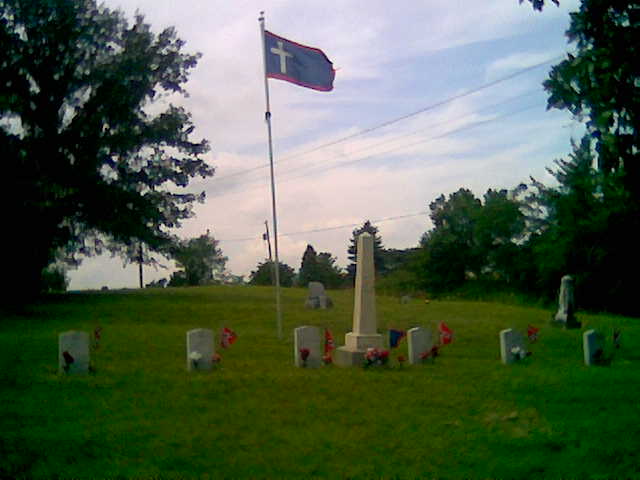-
Posts
53,466 -
Joined
-
Last visited
-
Days Won
631
Content Type
Profiles
Forums
Events
Everything posted by Subdeacon Joe
-
Excellent illustrations https://www.commsmuseum.co.uk/dykes/ganges/seamanshipmanual/seamanshipmanual.pdf https://sites.rootsweb.com/~pbtyc/B_S_M/Boat_Exercise_IV.html
- 1 reply
-
- 1
-

-

You wake up and its the year 1145 A.D
Subdeacon Joe replied to Buckshot Bear's topic in SASS Wire Saloon
See. So it was sort of asked. On the other hand, @Forty Rod SASS 3935 would likely go back and tell us about 1066 and how Godwinson didn't listen to him. -
https://youtu.be/qmZR-CkyQGc?si=5dA7JFVhTPOMqnr_
-
He was quite libertarian, anti-religion, and seemed to have no problem with polygamous relationships. A lot of far right militarists, the kind who parrotted from "Starship Troopers" about not being able to vote unless you did federal service, ended up denouncing him for his views.
-
https://www.thriftbooks.com/w/podkayne-of-mars_robert-a-heinlein/433675/#idiq=2503115&edition=2176202 7 bucks plus 2 bucks shipping. They also have "Space Suit" for 20 bucks. Also check Amazon.
-
Along with that is "The Moon Is a Harsh Mistress." A lot of interest stuff about government and human behavior.
-
One day I was reading the Labor Law poster that was in the LGS my wife worked at. At the bottom of it was a bit, I don't recall the exact words or if it was federal or state, going on about violence in the workplace, and if you see someone with a firearm you should report them immediately. Yeah.
-
-
Dispatch: Before dispatching rescue crews, please verify the vessel is actually sinking...... A-10 coast guard pilot: BRRRRRRRRRRRRT Affirmative. The Vessel is actually sinking.
-
If my memory is correct, always iffy now, he had been asked by one of the pulps to write something in the juvenile/young adult genera with a female protagonist. So he took a stab at it. 15 Earth year old Podkayne and her 11 Earth year old terror of a brother, Clark. The publisher didn't care for the original ending in which Podkayne was killed and demanded a rewrite with a happier ending. RAH strongly objected to it, comparing it to doing a rewrite of "Romeo and Juliet" to allow the young, lust besotted teens to live and marry. I just found this: 1963’s Podkayne of Mars was, if Heinlein’s comments in Grumbles from the Grave can be believed, not intended as a juvenile: as I was making sure of how old Podkayne was in the book. So he didn't think of it as "juvenile science fiction" not so much because of the age, but because it didn't fit the established "rules" for the category. I'd never heard of a "cadet" category before. Seems as if a lot of "juvenile" books in the US would more neatly fit that than true juvenile books. Almost all of his male protagonists seem to me to be late teens or young adults.
-
-
1.) Everything they know they learned from Hollywood. 2.) They form all their opinions on pathos rather than logos and ethos.
-
Also, most of the stories on that time-line are short stories for the pulps rather than novels or even novellas. Odd that you left "Podkayne of Mars" off your list of juvenile science fiction. "Starship Troopers" is an excellent novel, and got turned into a movie even worse than "Dune."
-

You wake up and its the year 1145 A.D
Subdeacon Joe replied to Buckshot Bear's topic in SASS Wire Saloon
I think knowledge of gunpowder got to Europe in the late 12th or early 13th century. In either case after the 1145 date. Of course, that doesn't really matter because the question is what WE would invent. I know the theory of how to extract extract the nitrates from guano. As mentioned above, reasonably simple in concept, but labor and time intensive. -
Geez.....it was ONLY a KNIFE!!!! That was so unFAIR!!!! What kind of coward uses a gun against a knife? Especially a GROWN MAN against a CHILD!!!!!
-
AAAALLLLLL RIGHT! LISTEN UP!!! Thanks to Carl, this weeks safety meeting will cover Use Of Ladders!
-
As found on FB: The day after the Hindenburg disaster in Lakehurst, New Jersey.
-

Finally an answer! Why Chicagoans do not put ketchup on hotdogs
Subdeacon Joe replied to Pat Riot's topic in SASS Wire Saloon
Only if homemade with lemon and garlic. -
The Feast of the Annunciation .... from which the date of Christmas is determined.
- 1 reply
-
- 1
-

-
It's INDEPENDENCE DAY! https://www.goarch.org/-/white-house-celebrates-204th-anniversary-of-march-25-greek-independence-day
- 1 reply
-
- 1
-

-
https://minerva.fandom.com/wiki/Future_History_Timeline There is a copy of the chart that Heinlein made, and which was published in 1941.
-

You wake up and its the year 1145 A.D
Subdeacon Joe replied to Buckshot Bear's topic in SASS Wire Saloon
Bellfounding was known in Europe fairly early. The Venerable Bede mentions large bronze bells in the early 8th century. Sulphur was known and used for various things, e g. medicaments, bleaching cotton, fumigation, and incidiary devices since antiquity. The hang up would have been the salt petre. I vaguely recall that deposits were mined in Spain in the 12th century, but just when I'm not sure. I don't recall what it was used for. So, bronze casting, sulphur charcoal are no problem. Niteries are simple in concept, low tech, and used minimal equipment. Just labor intensive and time consuming. -

You wake up and its the year 1145 A.D
Subdeacon Joe replied to Buckshot Bear's topic in SASS Wire Saloon
Who would want the headache ruling the world? I was taking the question from the view of a fan of pulp science fiction, just as you were magically transported back in time, you magically have the ability to build anything of reasonable size (small enough for one person to work on and operate). I did, years ago, help a guy rebuild a small platten press, so that knowledge is floating around the little Grey Cells, but the state of metallurgy wouldn't be advanced enough to make building one feasible. -

You wake up and its the year 1145 A.D
Subdeacon Joe replied to Buckshot Bear's topic in SASS Wire Saloon
I'll go with my original answer. Your original question, "What WOULD you invent..." supposes the knowledge and ability to make the things. Now, what I COULD invent or build is a completely different question. To that my answer would be, "Not a thing." I could try to introduce the concepts of sanitary personal habits and cooking, but that's about it. -

You wake up and its the year 1145 A.D
Subdeacon Joe replied to Buckshot Bear's topic in SASS Wire Saloon
The same way I woke up in the year of our Lord 1145. From your original question I assumed that I would have the knowledge and means to invent anything. Now that you jostled me, I think I'll add the steam engine to the list. Only two as far as social beliefs would be problematic: antibiotics and insecticides. And possibly not even the insecticides. People were using arsenic and other poisons to kill rodents long before A.D. 1145. And pennyroyal had long been known to somewhat keep fleas at bay. Mechanical devices were known and new ones being developed. Platten press could be water powered. Biggest problems would be a thick enough ink and ready supply of paper.



